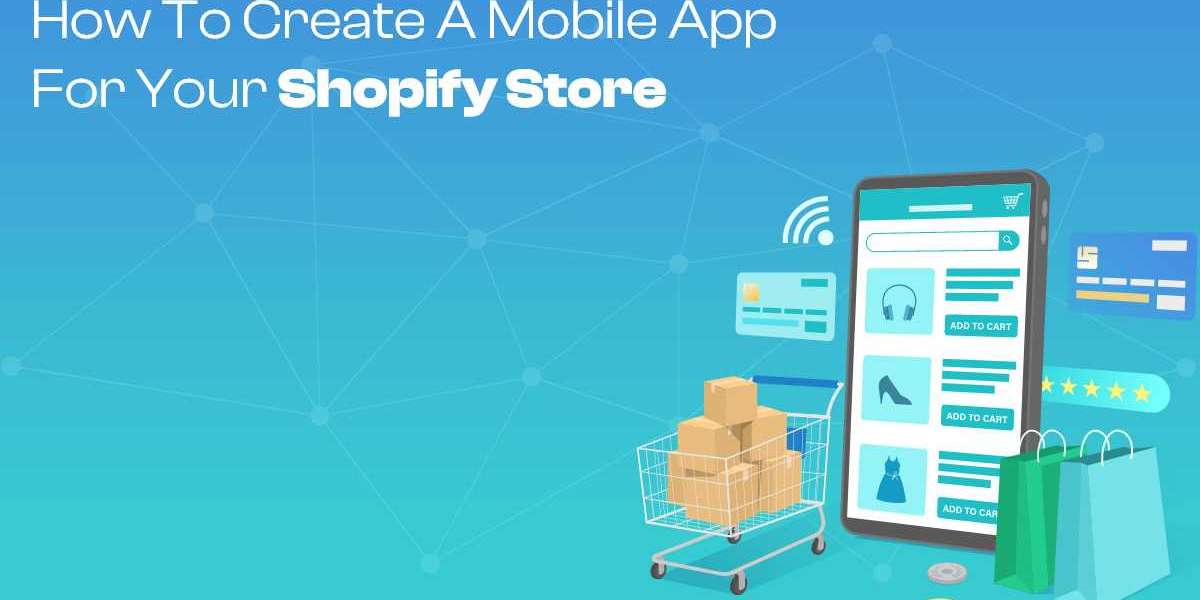Creating a shopify mobile app builder for your Shopify store can significantly enhance your customers' shopping experience and drive more sales. A mobile app offers convenience, personalized shopping, and direct communication channels, which can lead to increased customer loyalty and engagement. Here's a step-by-step guide on how to create a mobile app for your Shopify store.
1. Define Your Objectives
Before diving into the development process, it’s crucial to define your objectives. Ask yourself the following questions:
- What are your main goals for creating a mobile app?
- What features will best serve your customers?
- How will the app integrate with your existing Shopify store?
Understanding your objectives will help you make informed decisions throughout the development process and ensure that your app aligns with your business goals.
2. Choose the Right Development Approach
There are several approaches to developing a mobile app for your Shopify store:
- Native Apps: Developed specifically for iOS and Android platforms, offering the best performance and user experience. However, they require separate codebases for each platform, leading to higher development costs and time.
- Hybrid Apps: Built using web technologies (HTML, CSS, JavaScript) and wrapped in a native container. They work across multiple platforms with a single codebase, reducing development time and cost.
- Progressive Web Apps (PWAs): Web applications that offer a mobile app-like experience. They are accessible through browsers but provide offline capabilities, push notifications, and fast loading times.
Choose the approach that best fits your budget, timeline, and technical resources.
3. Select a Mobile App Builder
For Shopify store owners without extensive technical expertise, using a mobile app builder can be a practical solution. These platforms offer pre-built templates and drag-and-drop interfaces to simplify the app creation process. Some popular mobile app builders for Shopify include:
- Shopify Mobile App Builder by Plobal Apps: Offers customizable templates and seamless integration with your Shopify store.
- Shopify Mobile App Builder by Vajro: Provides real-time syncing, push notifications, and an easy-to-use interface.
- Shopify Mobile App Builder by Tapcart: Known for its beautiful designs and powerful features, including real-time updates and push notifications.
These tools can help you create a professional mobile app without requiring in-depth coding knowledge.
4. Design Your App
The design of your mobile app plays a crucial role in user engagement and satisfaction. Focus on creating a user-friendly interface that aligns with your brand identity. Key design considerations include:
- Intuitive Navigation: Ensure that users can easily browse products, search for items, and complete purchases.
- Consistent Branding: Use your brand’s colors, fonts, and logo to create a cohesive look and feel.
- High-Quality Images: Use high-resolution product images and provide multiple views to give customers a detailed look at your products.
- Responsive Design: Ensure that your app looks and functions well on various screen sizes and orientations.
5. Integrate Essential Features
To provide a comprehensive shopping experience, integrate essential features into your mobile app:
- Product Catalog: Display your products in an organized manner, with categories, filters, and search functionality.
- Shopping Cart: Allow users to add products to their cart, view cart contents, and proceed to checkout.
- Secure Payment Gateway: Integrate secure payment options to ensure safe and seamless transactions.
- User Accounts: Enable customers to create accounts, track orders, and save preferences for a personalized experience.
- Push Notifications: Send notifications for promotions, order updates, and abandoned carts to keep customers engaged.
- Customer Support: Provide easy access to customer support through chat, email, or phone.
6. Test Your App
Before launching your app, thoroughly test it to ensure it functions smoothly and provides a positive user experience. Perform the following tests:
- Functionality Testing: Verify that all features work as intended and that there are no bugs or glitches.
- Usability Testing: Ensure that the app is easy to navigate and that users can complete tasks without frustration.
- Compatibility Testing: Test the app on various devices and operating systems to ensure compatibility.
7. Launch and Promote Your App
Once your app is ready, launch it on the Apple App Store and Google Play Store. Create a marketing plan to promote your app and encourage downloads. Consider the following strategies:
- Social Media Marketing: Leverage your social media channels to announce the app launch and share its benefits.
- Email Marketing: Send targeted emails to your customers, highlighting the app’s features and providing download links.
- In-Store Promotion: Promote the app on your Shopify store with banners, pop-ups, and dedicated landing pages.
Conclusion
Creating a mobile app for your Shopify store can significantly enhance the shopping experience and drive sales. By following these steps—defining your objectives, choosing the right development approach, selecting a mobile app builder, designing your app, integrating essential features, testing, and promoting your app—you can create a powerful tool that enhances customer engagement and loyalty. Embrace the mobile shopping trend and provide your customers with a seamless, personalized experience that keeps them coming back.







